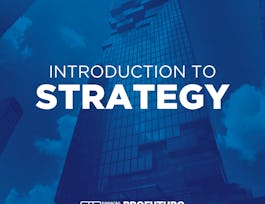This course explores the ways firms overcome challenges when operating globally – a process characterized for its complexity and uncertainty. Corporations trying to succeed in the global economy need to develop different types of strategies depending on where they are conducting business or industry they are in.


Global Strategy II: Doing Business in The Global Economy
This course is part of Global Challenges in Business Specialization
Taught in English
Some content may not be translated

Instructor: Marcelo Bucheli
Top Instructor
9,931 already enrolled
Included with 
Course
(139 reviews)
Details to know

Add to your LinkedIn profile
5 quizzes
Course
(139 reviews)
See how employees at top companies are mastering in-demand skills

Build your subject-matter expertise
- Learn new concepts from industry experts
- Gain a foundational understanding of a subject or tool
- Develop job-relevant skills with hands-on projects
- Earn a shareable career certificate


Earn a career certificate
Add this credential to your LinkedIn profile, resume, or CV
Share it on social media and in your performance review

There are 5 modules in this course
You will become familiar with the course, your classmates, and our learning environment. The orientation will also help you obtain the technical skills required for the course.
What's included
4 videos6 readings1 quiz1 discussion prompt
The main challenge of managers going global is to determine the important differences between countries and how to manage them. This class provides an analytical framework on how to manage those differences inside the firm and when competing with other corporations.
What's included
6 videos2 readings1 quiz1 peer review
How and when to enter a particular foreign market is a complex decision. While sometimes it makes sense to enter aggressively to earn first-mover advantages, in some other occasions waiting for others to enter first might be the best strategy. Similarly, entering small sometimes makes more sense than entering big. This module explores the advantages of each strategy and when to use them.
What's included
5 videos2 readings1 quiz
When entering foreign markets, multinational corporations have different options from which to choose. They are determined by the factors studied in the OLI and CAGE frameworks as well as the strategies chosen based on the cost reduction and differentiation pressures. This section studies how to evaluate which way to enter a foreign market, and the associated advantages and disadvantages.
What's included
6 videos2 readings1 quiz1 peer review
When operating globally, managers need to carefully analyze the political environment and develop strategies to deal with issues such as instability, xenophobia, or nationalism. This module explores the options firms have when dealing with political uncertainties, the type of analysis they need to conduct, and the political strategies they can develop.
What's included
6 videos4 readings1 quiz
Instructor

Recommended if you're interested in Business Strategy

University of Illinois at Urbana-Champaign

Fundação Instituto de Administração

Columbia University

Technion - Israel Institute of Technology
Get a head start on your degree
This course is part of the following degree programs offered by University of Illinois at Urbana-Champaign. If you are admitted and enroll, your coursework can count toward your degree learning and your progress can transfer with you.
Why people choose Coursera for their career




Learner reviews
Showing 3 of 139
139 reviews
- 5 stars
87.76%
- 4 stars
10.07%
- 3 stars
1.43%
- 2 stars
0.71%
- 1 star
0%
New to Business Strategy? Start here.

Open new doors with Coursera Plus
Unlimited access to 7,000+ world-class courses, hands-on projects, and job-ready certificate programs - all included in your subscription
Advance your career with an online degree
Earn a degree from world-class universities - 100% online
Join over 3,400 global companies that choose Coursera for Business
Upskill your employees to excel in the digital economy
Frequently asked questions
Access to lectures and assignments depends on your type of enrollment. If you take a course in audit mode, you will be able to see most course materials for free. To access graded assignments and to earn a Certificate, you will need to purchase the Certificate experience, during or after your audit. If you don't see the audit option:
The course may not offer an audit option. You can try a Free Trial instead, or apply for Financial Aid.
The course may offer 'Full Course, No Certificate' instead. This option lets you see all course materials, submit required assessments, and get a final grade. This also means that you will not be able to purchase a Certificate experience.
When you enroll in the course, you get access to all of the courses in the Specialization, and you earn a certificate when you complete the work. Your electronic Certificate will be added to your Accomplishments page - from there, you can print your Certificate or add it to your LinkedIn profile. If you only want to read and view the course content, you can audit the course for free.
If you subscribed, you get a 7-day free trial during which you can cancel at no penalty. After that, we don’t give refunds, but you can cancel your subscription at any time. See our full refund policy.

